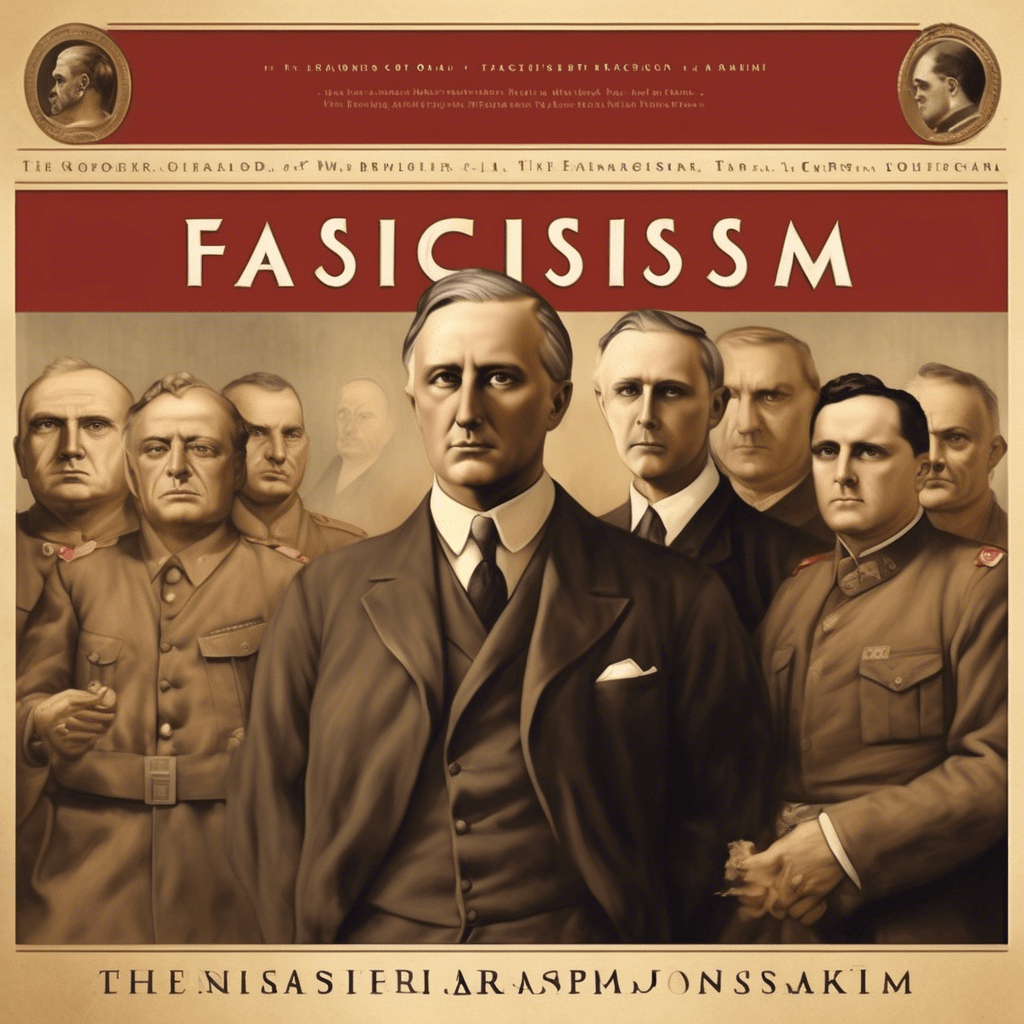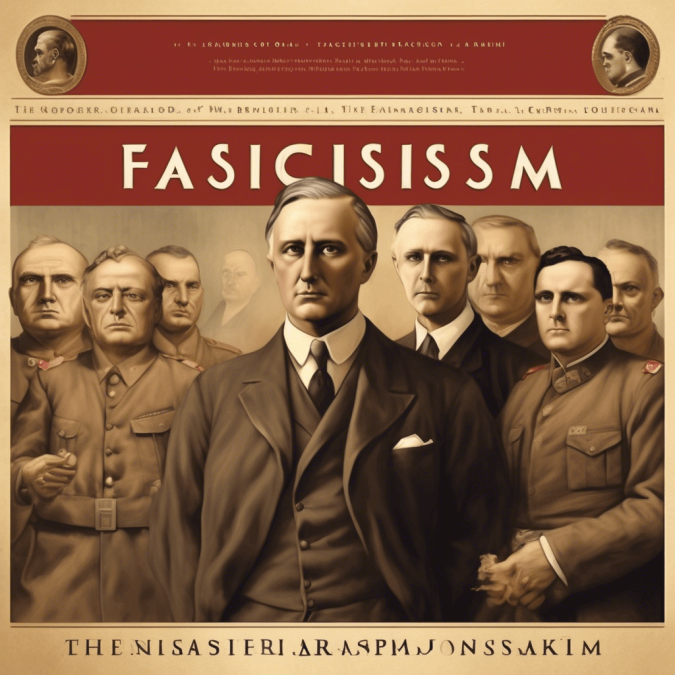
1. Introduction
Overview of Fascism ideology
Fascism is a far-right authoritarian ultranationalist political ideology characterized by dictatorial power, suppression of opposition, and strong regimentation of society and the economy. It emerged in the early 20th century as a response to the social, political, and economic upheavals of the time, offering a radical alternative to liberal democracy and socialism.
Importance and relevance of studying Fascism ideology
Studying Fascism ideology is crucial for understanding the roots of totalitarianism, nationalism, and authoritarianism in modern history. By examining its principles, beliefs, and historical impact, we can gain insights into the dangers of extremist ideologies and the consequences of unchecked power.
2. Historical Context
Origins of Fascism ideology
Fascism originated in Italy under Benito Mussolini’s leadership in the aftermath of World War I, drawing inspiration from nationalist and anti-communist sentiments. Its roots can be traced to the desire for a strong, centralized state that could restore order and national pride in a time of social and economic turmoil.
Key historical events leading to the rise of Fascism
The aftermath of World War I, the Treaty of Versailles, economic instability, and political unrest created fertile ground for the rise of Fascism in Europe. The Great Depression of the 1930s further fueled discontent and provided opportunities for Fascist leaders to exploit public grievances.
Influence of World War I and interwar period on the development of Fascism
The devastation of World War I, the collapse of empires, and the failures of liberal democracies in addressing socio-economic challenges paved the way for the rise of Fascism. The interwar period witnessed the erosion of democratic norms and the rise of totalitarian regimes that promised stability and order.
3. Ideological Foundations
Principles and beliefs of Fascism ideology
Fascism emphasizes the supremacy of the state, the glorification of the nation, and the subordination of individual rights to the collective well-being. It promotes authoritarianism, militarism, and the cult of leadership, rejecting liberal democracy, socialism, and internationalism.
Comparison with other political ideologies
In contrast to liberal democracy, which values individual freedoms and pluralism, Fascism advocates for a single-party state, censorship, and the suppression of dissent. It differs from socialism by upholding hierarchy, inequality, and elitism, while rejecting class struggle and workers’ rights.
Impact of social, economic, and cultural factors on the development of Fascism
Fascism emerged in response to the perceived failures of liberal democracy, the challenges of industrialization, and the disruptions of globalization. It capitalized on nationalist sentiments, economic grievances, and cultural anxieties to mobilize support for its radical vision of a disciplined and unified society.
4. Key Figures and Movements
Analysis of prominent Fascist leaders
Prominent Fascist leaders such as Benito Mussolini in Italy, Adolf Hitler in Germany, and Francisco Franco in Spain shaped the course of 20th-century history through their authoritarian rule, aggressive expansionism, and brutal repression of dissent.
Examination of Fascist movements in different countries
Fascist movements in Italy, Germany, Spain, and other countries varied in their ideological emphasis, tactics, and policies, reflecting local conditions and historical trajectories. Each regime implemented its version of Fascism, drawing on nationalist, racist, and anti-communist ideologies.
Comparison of different manifestations of Fascism across regions
The manifestations of Fascisms in Europe, Latin America, and Asia exhibited variations in ideology, strategies, and outcomes, highlighting the adaptability and resilience of Fascist movements in diverse cultural and political contexts.
5. Expansion and Decline
Spread of Fascism ideology beyond Europe
Fascism’s influence extended beyond Europe to regions like Latin America, Asia, and the Middle East, where nationalist and authoritarian movements adopted elements of Fascist ideology to consolidate power and suppress dissent.
Factors contributing to the decline of Fascism
The defeat of Fascist regimes in World War II, the Nuremberg Trials, and the discrediting of Fascist ideology as a result of its atrocities contributed to the decline of Fascism as a mainstream political force in the postwar era.
Legacy of Fascism in contemporary society
The legacy of Fascism continues to reverberate in contemporary society through the persistence of far-right movements, xenophobic nationalism, and authoritarian tendencies that pose challenges to democratic norms and human rights.
6. Case Studies
In-depth analysis of specific Fascist regimes and their impact
Case studies of Fascist regimes in Italy, Germany, and Spain provide insights into the methods of governance, propaganda techniques, and policies that characterized these authoritarian regimes. The cult of personality, censorship, and the use of violence were common features of Fascist rule.
Examination of propaganda, policies, and tactics used by Fascist governments
Fascist governments employed propaganda to manipulate public opinion, glorify the leader, and demonize perceived enemies. Policies such as militarization, suppression of dissent, and racial discrimination were central to maintaining control and enforcing conformity.
Lessons learned from historical examples of Fascism
The historical examples of Fascisms serve as cautionary tales about the dangers of authoritarianism, intolerance, and the erosion of democratic norms. By studying the rise and fall of Fascist regimes, we can learn valuable lessons about the fragility of democracy and the importance of safeguarding human rights.
7. Contemporary Relevance
Discussion on the resurgence of Far-right movements and their connection to Fascism
The resurgence of far-right movements in recent years, characterized by xenophobia, nationalism, and anti-immigrant sentiments, has raised concerns about the revival of Fascist ideologies and tactics in the political landscape. The connections between contemporary far-right movements and historical Fascisms warrant scrutiny and vigilance.
Analysis of how Fascism ideology continues to influence modern politics and society
Fascist ideology continues to influence modern politics and society through the manipulation of fear, the scapegoating of marginalized groups, and the erosion of democratic institutions. Populist leaders and extremist groups exploit nationalist sentiments and authoritarian impulses to gain power and undermine liberal democracy.
Ways to combat and prevent the rise of Fascism in the present day
To combat the resurgence of fascism in the present day, it is essential to promote democratic values, defend human rights, and foster inclusive societies that reject hatred and intolerance. Educating the public about the dangers of Fascism, supporting civil society organizations, and strengthening democratic institutions are crucial steps in preventing the rise of authoritarianism.
8. Conclusion
Summary of key findings and insights
The historical overview of Fascism’s ideology reveals the destructive potential of extremist ideologies and the importance of safeguarding democratic norms and human rights. By examining the origins, principles, and impact of Fascism, we gain a deeper understanding of the dangers of totalitarianism and the fragility of liberal democracy.
Reflection on the enduring legacy of Fascism ideology
The enduring legacy of Fascism’s ideology serves as a reminder of the dark chapters of history marked by oppression, violence, and genocide. The lessons learned from the rise and fall of Fascist regimes underscore the need for vigilance against authoritarian impulses and the protection of democratic values in the face of extremism.
Recommendations for further research and study
Further research on Fascism’s ideology should explore its intersections with nationalism, racism, and imperialism, as well as its impact on marginalized communities and vulnerable populations. Comparative studies of different manifestations of Fascism and their legacies in contemporary society can deepen our understanding of the enduring challenges posed by extremist ideologies.
9. References
– Paxton, R. O. (2004). The Anatomy of Fascism. Vintage.
– Eatwell, R. (2003). Fascism: A History. Pimlico.
– Griffin, R. (1995). The Nature of Fascism. Routledge.
– Kallis, A. (2000). Fascism Reader. Routledge.
– Payne, S. G. (1995). A History of Fascism, 1914-1945. University of Wisconsin Press.
Glossary
– Fascism: A far-right authoritarian ultranationalist political ideology.
– Totalitarianism: A form of government that seeks to control all aspects of public and private life.
– Nationalism: Devotion and loyalty to one’s nation or state.
– Authoritarianism: A system of government characterized by strong central power and limited political freedoms.
– Propaganda: Information, especially of a biased or misleading nature, used to promote a political cause or point of view.
